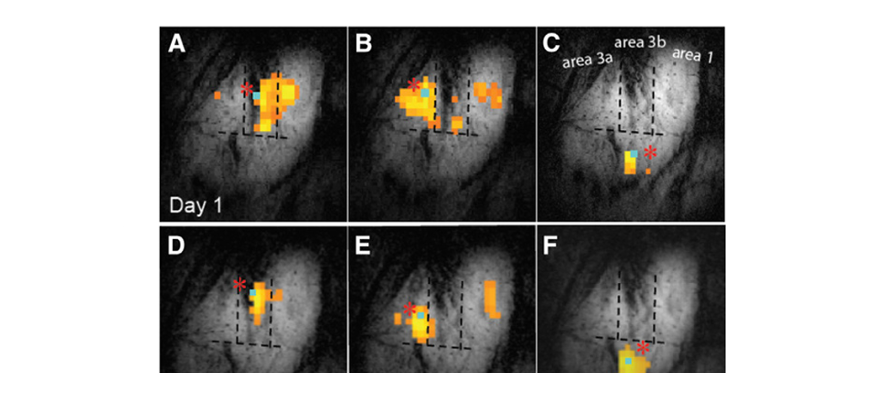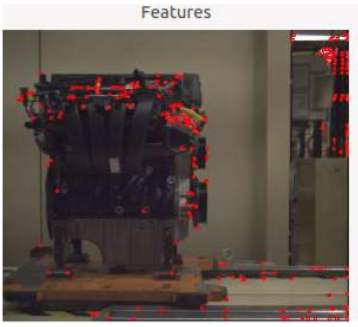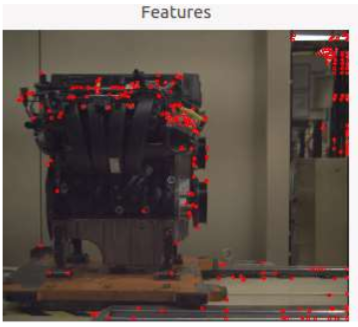Theoretical Neuroscience and Complex Systems Research Group

Group leader: Zoltán Somogyvári
Fülöp Bazsó, Tamás Bábel, Zsigmond Benkő#,Jennifer Csatlós, Dorottya Cserpán#, Péter Érdi, Tamás Kiss, László, Négyessy, László Zalányi
The fundamental mission of the Theoretical Neuroscience and Complex Systems research group, working within the Wigner RC Department of Theoretical Physics, is to promote the understanding of complex systems, concentrating primarily on the functioning of the nervous system. In order to achieve this goal, on the one hand, we develop and apply new data analysis systems which allow us to process and analyse the important amount of experimental data produced by our collaborating partners. On the other hand, we create mathematical models for a better understanding of the phenomena inferred behind the measured phenomena. The interdisciplinary approach necessary for this work is mirrored by the composition of our group, where in addition to physics, biology is also significantly represented. Although the majority of our work focuses on the scientific problems related to the functioning and the functional disorders of the nervous system, the new analysis methods and models we have developed have a sphere of application that is not limited to the nervous system. We have studied a great number of complex systems, from the reference structures of budget fluctuations to the time-lines characterising electricity consumption.
We have been implementing a new causal measure – which can determine causal relations between time series generated by dynamical systems-based on manifold dimensions. We used frequentist statistical tools and we have been developing a Bayesian inference algorithm to detect hidden common causes between apparently directly related variables. Simultaneously, we have been validating our method on model systems and have applied on
multivariate electrical recordings from epileptic patients to develop our understanding on seizure onset, propagation and to get better epileptic focus localization. We proved that the combination of in vivo multichannel neural recording and controlled tracer injection using a single implanted microdevice is feasible, and therefore it can be a powerful tool for studying the connectome of the brain. This new microprobe allows the simultaneous electric recording of the activity of a neuronal pool and the labelling of its connectivity.
Based on our quantitative analyses of the distribution of the connectivity in the region of the primate cortex responsible for tactile functions we proposed that intra-areal connections are important in integrating information across fingers, while inter-areal connections are important in maintaining input localization during hand movement. This finding significantly contribute to our understanding about the role of intra-areal and interareal cortical interactions in information processing.
We proposed a new feedback model of the dynamics of gene expression and protein synthesis on the basis of experimental findings. We built a stochastic kinetic model to investigate and compare the “traditional” and the feed-back model of genetic expression processes. Qualitative and quantitative changes in the shape and in the numerical characteristics of the stationary distributions of proteins and RNA molecules suggest that more combined experimental and theoretical studies should be done to uncover the details of the kinetic mechanisms of gene expressions.
A statistical learning based visual solution developed and applied for fault detection in industrial environment. As a mobile vision system the area of use was the automatic detection of rare faults in complex assembled objects. The object detection, the fore- and background separation, and the multi-model database enables the system to manage irregular batches of the different objects. A multi-model database guarantees that the object is compared with the statistically most relevant model, therefore it reduces the number of false alarms. The developed system is able to detect faults with the size of 2% of the total picture based on previously learned models (Fig. 1).
# Ph.D student


Figure 1. Identification and tracking of the features on an engine running on the conveyor track, based on statistical learning.
Starting in August, 2016 our group expanded its interest from purely theoretical work in the field of neuroscience to be capable of generating in-house data used in model creation and validation. Supported by the Wigner Research Group Grant and the Department of Anatomy, Histology and Embryology of Semmelweiss University (SU) we have been setting up an experimental electrophysiology laboratory at SU. Data collection for developing an animal model of cognitive symptoms associated with Schizophrenia started in October and recording of the first of two major datasets was completed in December. Besides collecting original data students are also trained in this newly formed laboratory to learn the necessary techniques to handle data acquisition equipment, work with experimental animals and analyze data.
Using the formal apparatus of concentration inequalities we clarified the asymptotic behaviour of regularity-based model fitting in graphs. We proved that the fitting and model selection procedure converges and gives either optimal result or ends in a result close to the optimal solution.
We applied regularity-based classification of detrended fMRI voxel time series in healthy young adults and have found significant overlaps in partitions corresponding to resting and 2-back states, suggesting task-related structured activity in the resting state.
International cooperations.
Stem Cell and Brain Research Institute, French Institute of Health and Medical Research,
(Lyon, France) Multiscale and multimodal analyses of brain signals using new neuro-probes
(Emmanuel Procyk - László Négyessy, Zoltán Somogyvári)
VTT Technical Research Centre of Finland (Espoo, Finland), Regular structure in networks
and graphs (Hannu Reittu – Fülöp Bazsó)
Oregon Health & Sciences University, (Portland, OR, USA) és Interdisciplinary Institute of
Neuroscience and Technology Yuquan Campus, Zhejiang University (38 Zheda Road,
Hangzhou, Zhejiang, China) Imaging and mapping sensorimotor circuits in the primate (Anna
Wang Roe – László Négyessy).
Neuroscience Research Unit, Pfizer Global Research and Development, Cambridge, MA,
USA. Tau-pathology in Alzheimer’s disease (Liam Scott – Tamás Kiss)
Translational Neuropharmacology, Section of Comparative Medicine, Yale University School
of Medicine, New Haven, CT 06520, USA. Tau-pathology in Alzheimer’s disease (Mihály
Hajós – Tamás Kiss)
Universiteit van Amsterdam, Netherland. Investigating the canonical organization of
neocortical circuits for sensory integration (Conrado Bosman and Unberto Olcese – László
Négyessy, Zoltán Somogyvári)
Institut national de la santé et de la recherche médicale, INSERM, Lyon, France. Investigating
the canonical organization of neocortical circuits for sensory integration (Luc Gentet – László
Négyessy, Zoltán Somogyvári)
Danish Research Institute of Translational Neuroscience, DANDRITE, Aarhus, Danish
Kingdom. Electrophysiological recordings and manipulation of single neurons in behaving
animals (Duda Kvitsiani – Zoltán Somogyvári)
Grants
NKFIH OTKA K-113145, Micro-electric imaging: modeling, source reconstruction and
causality analysis for multi-electrode arrays. (Zoltán Somogyvári, 2015-2018)
ERA-NET FLAG-ERA, Human Brain Project, NKFIH NN-118902: “CANON – Investigating the
canonical organization of neocortical circuits for sensory integration”. (L Négyessy & Z
Somogyvári Pis, 2016-2018)
NIH: „Neural basis of tactile object perception in SI cortex” (consortial subaward to L
Négyessy, 2016-2019)
French-Hungarian Bilateral Intergovernmental S&T Cooperation
TET14FR_C85E25D3_eBrain
Publications
Articles
1. Bruck P, Réthy I, Szente J, Tobochnik J, Érdi P: Recognition of emerging technology
trends: class-selective study of citations in the U.S. Patent Citation Network.
SCIENTOMETRICS 107:(3) 1465-1475 (2016)
2. Érdi P, Bruck P: Patent citation network analysis: Ranking: From web pages to patents.
LECT NOTES ARTIF INT 9886 544 (2016) In: 25th International Conference on Artificial
Neural Networks, ICANN 2016. Barcelona, Spain,: 06-09-2016 – 09-09-2016
3. Érdi P: Patent citation network analysis: Topology and evolution of patent citation
networks. LECT NOTES ARTIF INT 9886 543 (2016) In: 25th International Conference on
Artificial Neural Networks, ICANN 2016. Barcelona, Spain,: 06-09-2016 – 09-09-2016
4. Fekete Z, Pálfi E, Márton G, Handbauer M, Bérces Zs, Ulbert I, Pongrácz A, Négyessy L:
Combined in vivo recording of neural signals and iontophoretic injection of pathway
tracers using a hollow silicon microelectrode. SENSOR ACTUAT B-CHEM 236: 815-824
(2016)
5. Kamalaldin K, Salome A, Érdi P: Modelling ebola. SCI PROG 99:(2) 200-219 (2016)
6. Kantor O, Mezey S, Adeghate J, Naumann A, Nitschke R, Enzsoly A, Szabo A, Lukats A,
Nemeth J, Somogyvari Z, Volgyi B: Calcium buffer proteins are specific markers of
human retinal neurons. CELL TISSUE RES 365:(1) 29-50 (2016)
7. Kantor O, Benko Z, Enzsoly A, David C, Naumann A, Nitschke R, Szabo A, Palfi E, Orban J,
Nyitrai M, Nemeth J, Szel A, Lukats A, Volgyi B: Characterization of connexin36 gap
junctions in the human outer retina. BRAIN STRUCT FUNCT 221: 2963-2984 (2016)
8. Scott L, Kiss T, Kawabe TT, Hajós M: Neuronal network activity in the hippocampus of
tau transgenic (Tg4510) mice. NEUROBIOL AGING 37: 66-73 (2016)
9. Érdi P: Kémiai kinetika, ahogy azt látni kell és lehet (Chemical kinetics, as should and
can be seen, in Hungarian) ALKALMAZOTT MATEMATIKAI LAPOK 33:(2) 121-128 (2016)
10. Pálfi E, Ashaber M, Palmer C, Friedman RM, Roe AW, Négyessy L: Neuronális
összeköttetések a szomatoszenzoros kérgi area 3b és area 1 kézreprezentációs
területén főemlősökben (Neuronal connections within the hand representation in areas
3b and 1 of the somatosensory cortex in primates, in Hungarian). ORVOSI HETILAP
157:(33) 1320-1325 (2016)
Conference proceeding
11. File B, Klimaj Z, Somogyvári Z, Kozák LR, Gyebnár G, Tóth B, Kardos Z, Ulbert I, Molnár
M: Age-related changes of the representative modular structure in the brain. In: Proc.
6th International Workshop on Pattern Recognition in Neuroimaging, PRNI Trento,
Italy, 2016 22-06-2016 – 24-06-2016. IEEE, Seattle, (ISBN:9781467365307) Paper
7552346, pp. 1-4, 2016
Book chapters
12. Érdi P, Bányai M: Introduction to cognitive systems. In: Angelov (ed.): Handbook on
Computational Intelligence. Singapore: World Scientific (ISBN:978-981-4675-00-0) pp.
317-356, 2016
13. Somogyvári Z, Érdi P: Forward and backward modelling: from single cells to neural
population and back. In: Kozma R, Freeman WJ (eds.): Cognitive Phase Transitions in
the Cerebral Cortex - Enhancing the Neuron Doctrine by Modeling Neural Fields.
(Studies in Systems, Decision and Control; 39) Springer International Publishing.
(ISBN:9783319244068) pp. 135-146, 2016.
Others
14. Somogyvári Z, Zalányi L: Biofizika (Biophysics, in Hungarian). In: Simon-Székely Attila
(ed.): Lélekenciklopédia: A lélek szerepe az emberiség szellemi fejlődésében. Budapest:
Gondolat Kiadó, (ISBN:978 963 693 710 2) pp. 355-374 (2016).

